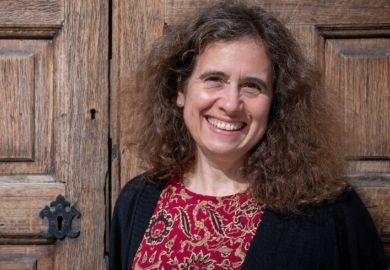A few years ago I was studying birds in the Biebrza region of north-eastern Poland and staying in a small Hansel and Gretel village. On my first morning, I awoke just as the early May day was growing light. The sheer volume and diversity of birdsong was extraordinary, and as I lay in bed I started to count on my fingers all the species I could hear. There were chirruping house sparrows, warbling starlings, twittering swallows and, slightly farther away, the ethereal flute-like call of a golden oriole and the nasal mewing of a wryneck. In all, no fewer than 30 bird species whose songs I could hear from the surrounding water meadows and woodlands.
This remarkable chorus was a poignant reminder of what we have lost in Britain through the intensification of agriculture. Birdsong lifts our spirits, and without it, we are culturally and emotionally much poorer.
These two books are celebrations of birdsong, one scientific, the other popular, but both informative and stimulating. David Rothenberg's Why Birds Sing provides a fascinating social commentary on the scientific study of birdsong. Rothenberg is a musician whose talents allow him to interact with birds directly. When he plays his clarinet they respond, in much the same way as they did to Beatrice Harrison when she famously played her cello to the nightingales in her Surrey garden live on BBC radio in the 1920s. Birds often respond to musical (and other) sounds as though they were the songs of other birds, offering Rothenberg novel insights into the way birds sing: their inclination to improvise and match the song of their opponents and their apparent joy at the sound of their own voice. Informed by science, history and his own experiences, Rothenberg provides an engaging introduction to song research for the non-specialist reader.
For the hard-nosed scientist, Nature's Music , edited by Peter Marler and Hans Slabbekoorn, is the last word (for now) in birdsong research. Not only is this the most comprehensive account of all aspects of birdsong, it is also a model of academic publishing. Most academic publishers excel in creating poorly designed books, but Elsevier should be congratulated on a superb production: there is even a CD of some songs. This book is dedicated to Luis Felipe Baptista, the pioneer birdsong researcher who died prematurely in 2000. In celebration of Baptista's all-too-short career, the editors have brought together a superb team of writers to cover all major aspects of birdsong - spanning nature and nurture, hormones, the syrinx, the brain and conservation.
The study of birdsong has a fascinating history. Since earliest times, people have kept songbirds. Pliny recounts how the young emperors Britannicus and Nero had pet nightingales and starlings that they taught to talk. Keeping songbirds in captivity provided an extraordinary window of opportunity and allowed educated people to ask how birds acquired their songs: were they instinctive or learnt? The role of learning was obvious to bird keepers, who in the 1600s discovered that young canaries kept in the same room as a singing nightingale would eventually adopt the nightingale's song instead of their own. When this occurs, it is remarkable and unsettling: I once had a siskin that sang canary song - I never got used to it.
Investigating birdsong was difficult because it was so hard to describe.
Words were inadequate, exemplified by geographical variation in the same sounds. In England, the cockerel's crow is "cock-a-doodle-do"
(Shakespeare's version was "cock-a-diddle-dow)"; in Germany it is "kikeriki" and in Japan "kokke-kokko". Even musical notation, first used by Athanasius Kircher in the 1600s, did not quite capture the magic. For centuries, the study of birdsong floundered for want of a straightforward way to measure it.
The breakthrough came in the 1940s with the invention of the sound spectrograph, or sonograph, a machine that visualised birdsong (and other sounds). I remember using one as an undergraduate. With hindsight, I am amazed that I was ever allowed to use such an expensive machine unsupervised. One recorded the song on to it, which then burnt its image on to heat-sensitive paper on a rotating drum. The result was a sound picture.
The technology has improved, and there is now software that measures the frequency and the intervals between all the song components, which allows researchers to record and compare birdsong almost as easily as measuring a person's height.
The technology launched a fabulously productive era of research, pioneered by Marler's supervisor, Bill Thorpe, at Cambridge University. Using the chaffinch as his main study species, Thorpe showed that, while song was largely learnt, there was also a genetic template. A bird reared in isolation sings a poor substitute for normal song, but one that is still recognisable as chaffinch song - the tonal quality is hardwired, the phrasing learnt. As Ernst Mayr, the most famous evolutionary biologist of the 20th century, said: the study of song learning did more to invalidate the artificial distinction between nature and nurture than anything else.
It has done much more. The male hormone testosterone was first identified and made artificially in the 1930s. It transformed the canary trade, at least briefly. As with many birds, only male canaries sing. The females are silent and, from a commercial point of view, valueless. Given a shot of synthetic testosterone though, females burst into song and are instantly marketable. Of course, as the testosterone wears off, song ceases.
A clever trick you might think. But one person decided to explore the biological basis for this and, in doing so, changed the way we think about the brain. Most small birds in temperate regions such as Britain breed in spring. They start singing as their gonads grow from almost nothing in winter to something substantial in spring; once breeding is over, the gonads regress again. The testes produce testosterone, which stimulates song and alters the brain, and just as the testes grow afresh each spring, so do the neurons in the brain that control song production. What Fernando Nottebohm discovered was that female birds injected with testosterone also grew brain cells that enabled them to sing.
So what, you might ask? But this is an astounding discovery because the common wisdom among neurobiologists is that the neurons you are born with have to last a lifetime. Neurons do not replace themselves in the same way as other cells. Yet here are male songbirds growing new neurons every year, and even females that do not normally sing have the potential to do so with the right (or wrong) stimulation.
If we can discover how neurons in birds' brains regenerate themselves, we might find cures for Parkinson's disease and other neurological disorders.
The potential is enormous. Research on birdsong has informed us not only about birdsong, but also about the brain. The way neurons regenerate and retain memory is the subject of continuing research and is a wonderful instructive example of why governments should fund all sorts of blue-skies research - you simply cannot predict when something will be useful.
A final thought. Some people have argued that investigating and analysing behaviours such as birdsong somehow removes some of its magic. Nothing could be further from the truth. Knowing even a little bit - and it is still just a bit - of the wonderfully sophisticated links between hormones, the brain and behaviour is, like birdsong itself, a cause for celebration.
Tim Birkhead is professor of behaviour and evolution, Sheffield University.
Why Birds Sing: One Man's Quest to Solve an Everyday Mystery
Author - David Rothenberg
Publisher - Allen Lane
Pages - 258
Price - £17.99
ISBN - 0 7139 9829 6
Register to continue
Why register?
- Registration is free and only takes a moment
- Once registered, you can read 3 articles a month
- Sign up for our newsletter
Subscribe
Or subscribe for unlimited access to:
- Unlimited access to news, views, insights & reviews
- Digital editions
- Digital access to THE’s university and college rankings analysis
Already registered or a current subscriber? Login



